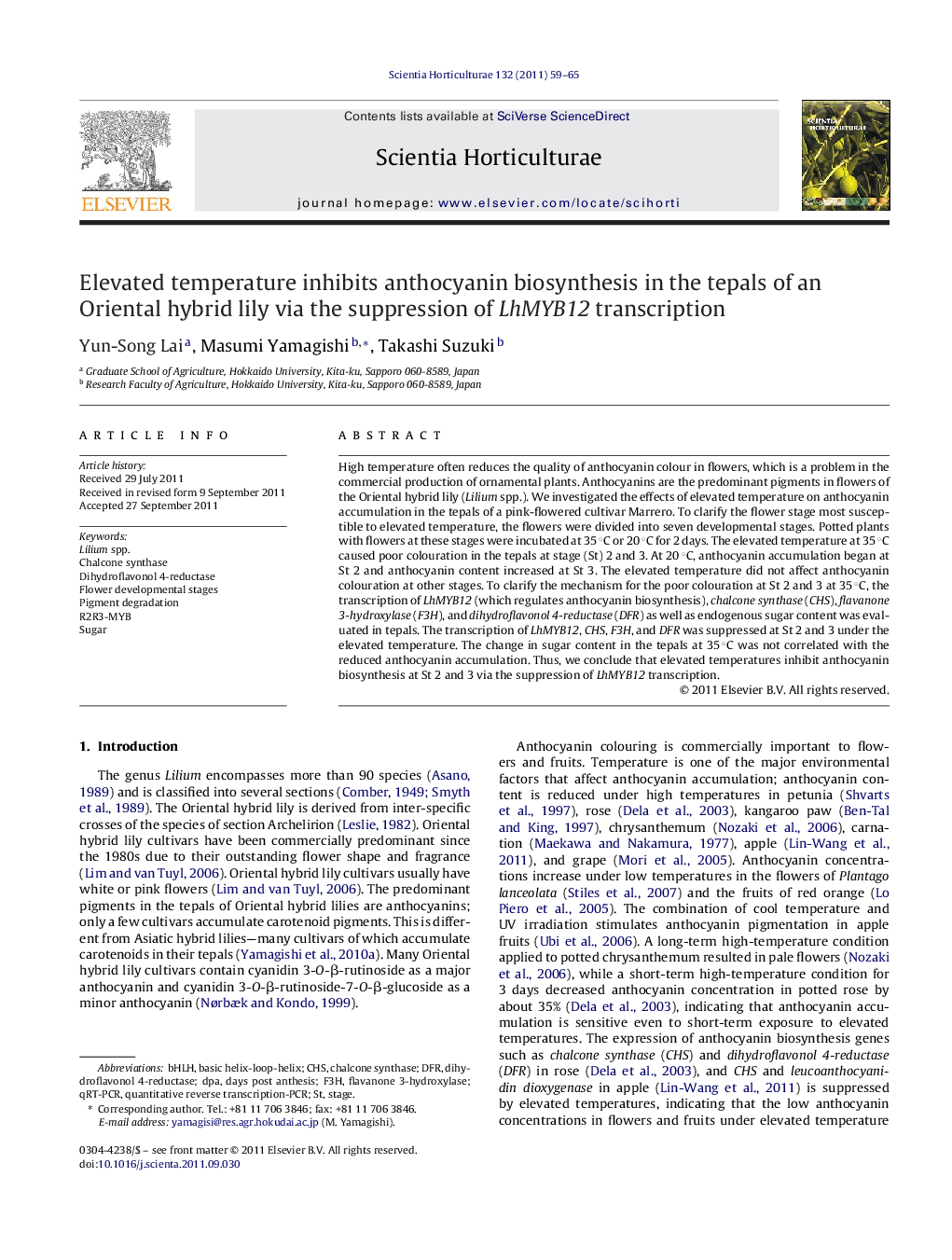| Article ID | Journal | Published Year | Pages | File Type |
|---|---|---|---|---|
| 4567950 | Scientia Horticulturae | 2011 | 7 Pages |
High temperature often reduces the quality of anthocyanin colour in flowers, which is a problem in the commercial production of ornamental plants. Anthocyanins are the predominant pigments in flowers of the Oriental hybrid lily (Lilium spp.). We investigated the effects of elevated temperature on anthocyanin accumulation in the tepals of a pink-flowered cultivar Marrero. To clarify the flower stage most susceptible to elevated temperature, the flowers were divided into seven developmental stages. Potted plants with flowers at these stages were incubated at 35 °C or 20 °C for 2 days. The elevated temperature at 35 °C caused poor colouration in the tepals at stage (St) 2 and 3. At 20 °C, anthocyanin accumulation began at St 2 and anthocyanin content increased at St 3. The elevated temperature did not affect anthocyanin colouration at other stages. To clarify the mechanism for the poor colouration at St 2 and 3 at 35 °C, the transcription of LhMYB12 (which regulates anthocyanin biosynthesis), chalcone synthase (CHS), flavanone 3-hydroxylase (F3H), and dihydroflavonol 4-reductase (DFR) as well as endogenous sugar content was evaluated in tepals. The transcription of LhMYB12, CHS, F3H, and DFR was suppressed at St 2 and 3 under the elevated temperature. The change in sugar content in the tepals at 35 °C was not correlated with the reduced anthocyanin accumulation. Thus, we conclude that elevated temperatures inhibit anthocyanin biosynthesis at St 2 and 3 via the suppression of LhMYB12 transcription.
► An elevated temperature (35 °C) was applied to an Oriental hybrid lily. ► The elevated temperature suppressed anthocyanin accumulation in tepals. ► Flower buds that began pigmentation were susceptible to the elevated temperature. ► Anthocyanin biosynthesis was inhibited via the suppression of R2R3-MYB.
